5 Real-Life Sprint Review Horror Stories (and the Lessons Behind Them)
Discover 5 real-life sprint review horror stories and lessons for Agile teams to improve feedback, collaboration, and sprint effectiveness.
Sprint reviews are meant to be collaborative sessions where teams showcase progress, gather feedback, and adapt plans for the next sprint. Done well, they strengthen trust and keep projects aligned with business goals. Done poorly, they can derail momentum, damage stakeholder relationships, and even erode confidence in Agile itself.
In this article, we’ll walk through five real-life sprint review horror stories drawn from marketing, IT, and HR teams. Each one reveals how mismanaged reviews, weak sprint planning, or lack of stakeholder engagement can quickly spiral into chaos—and most importantly, the lessons you can use to prevent your own sprint reviews from turning into cautionary tales.
What Is a Sprint Review?
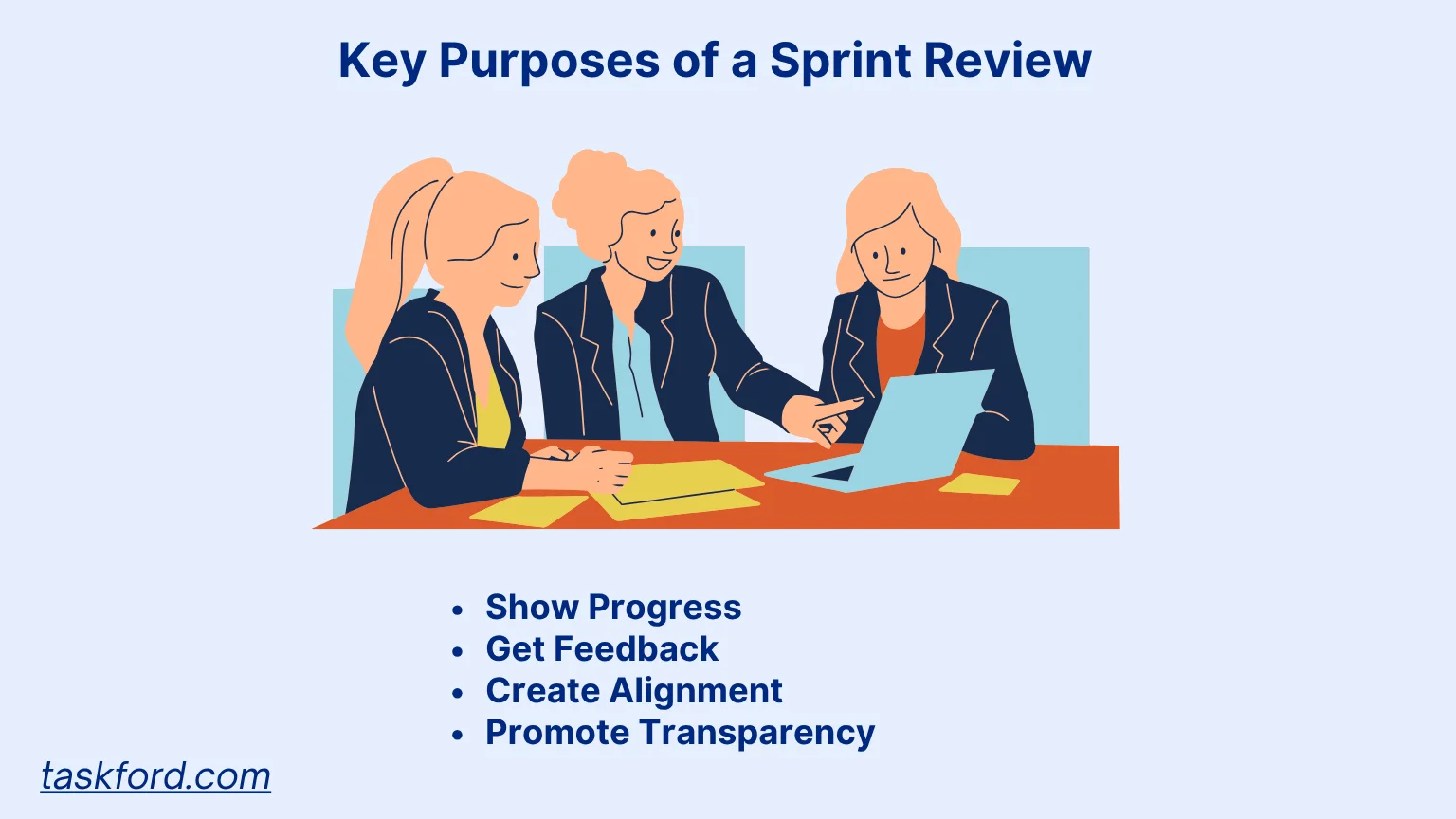
A sprint review is one of the core Scrum events, taking place at the end of each sprint. While sprint planning sets the goals and backlog items for the iteration, the sprint review is where the team demonstrates what has been built and discusses what’s next.
Unlike a retrospective, which focuses on how the team works together, the sprint review focuses on the product and outcomes.
Key Purposes of a Sprint Review
- Show progress: Demonstrate completed work in a usable state.
- Get feedback: Engage stakeholders to inspect the increment and adapt the backlog.
- Create alignment: Ensure everyone understands where the product is headed next.
- Promote transparency: Share successes and challenges openly.
When done right, sprint reviews strengthen trust and accelerate value delivery. When done wrong? They can derail momentum and damage stakeholder confidence. That is why it's an important part in Scrum.
Story 1: The Marketing “Big Reveal” That Backfired
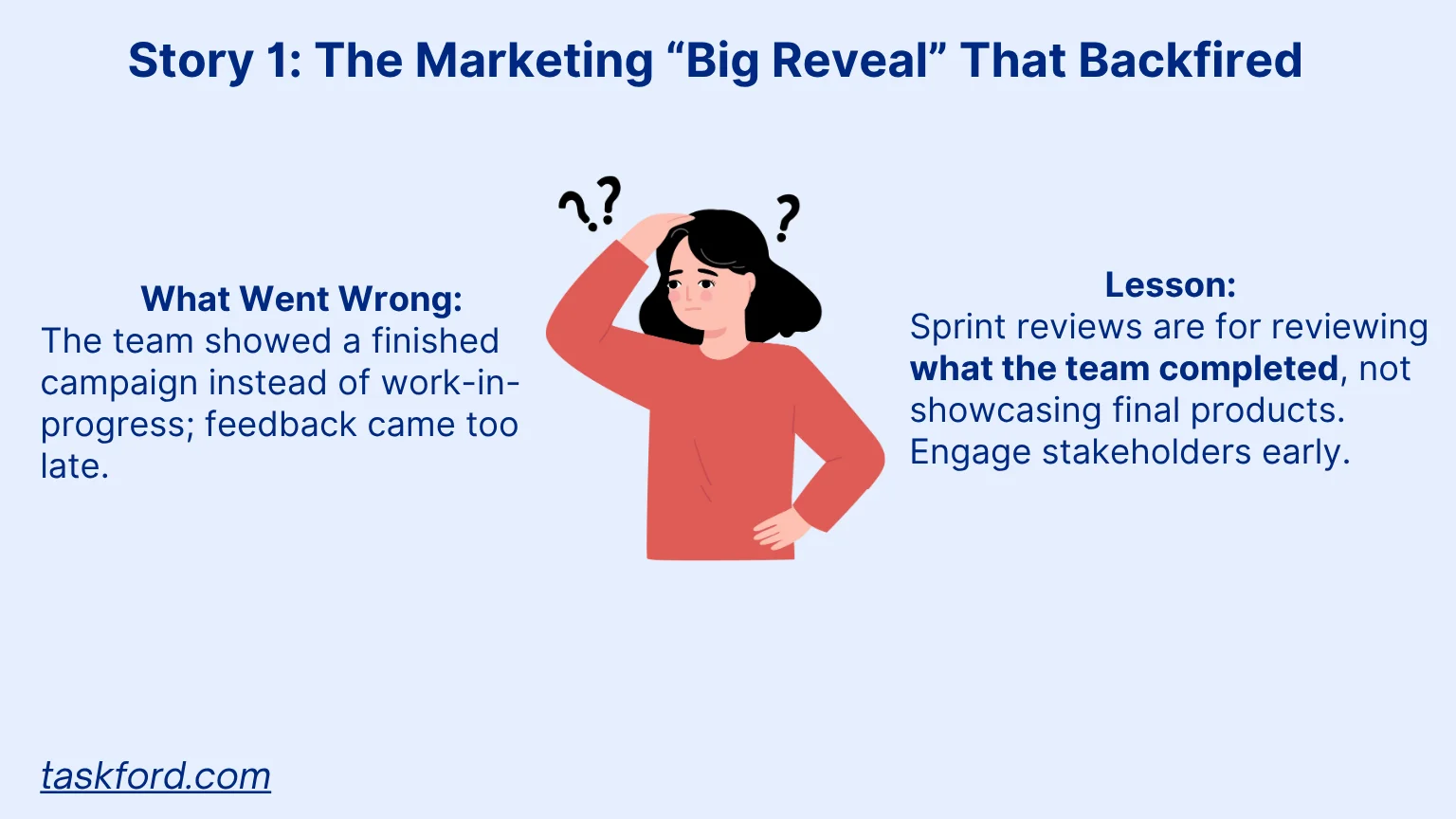
The marketing team believed they had struck gold. For two weeks they poured effort into producing a sleek promotional video. Confident in their work, they skipped showing drafts and saved everything for the sprint review.
On the day of the meeting, the lights dimmed, the projector flickered on, and the room went quiet as the video played. When the lights came up, the head of brand frowned. “This does not align with our identity. Who approved this?”
The room grew tense. Senior stakeholders began listing issues: the tone was off, the visual style clashed with existing campaigns, and the call-to-action confused the upcoming product launch strategy.
By the end of the meeting, leadership ordered the campaign scrapped. Weeks of work were wasted. The team was demoralized, and trust between marketing and brand management weakened.
What Went Wrong
- The review was treated as a grand unveiling, not a feedback checkpoint.
- Stakeholders were not involved early enough.
- Feedback came too late to be useful.
Lesson for Teams
Marketing teams must treat sprint reviews as validation sessions after each sprint. Even rough storyboards or sketches are worth sharing if they keep direction aligned.
What to Do Instead
- Share early concepts in smaller, informal previews.
- Use the review to validate direction, not showcase perfection.
- Tie campaign outputs back to sprint goals so stakeholders understand the “why.”
Story 2: The IT Demo That No One Understood
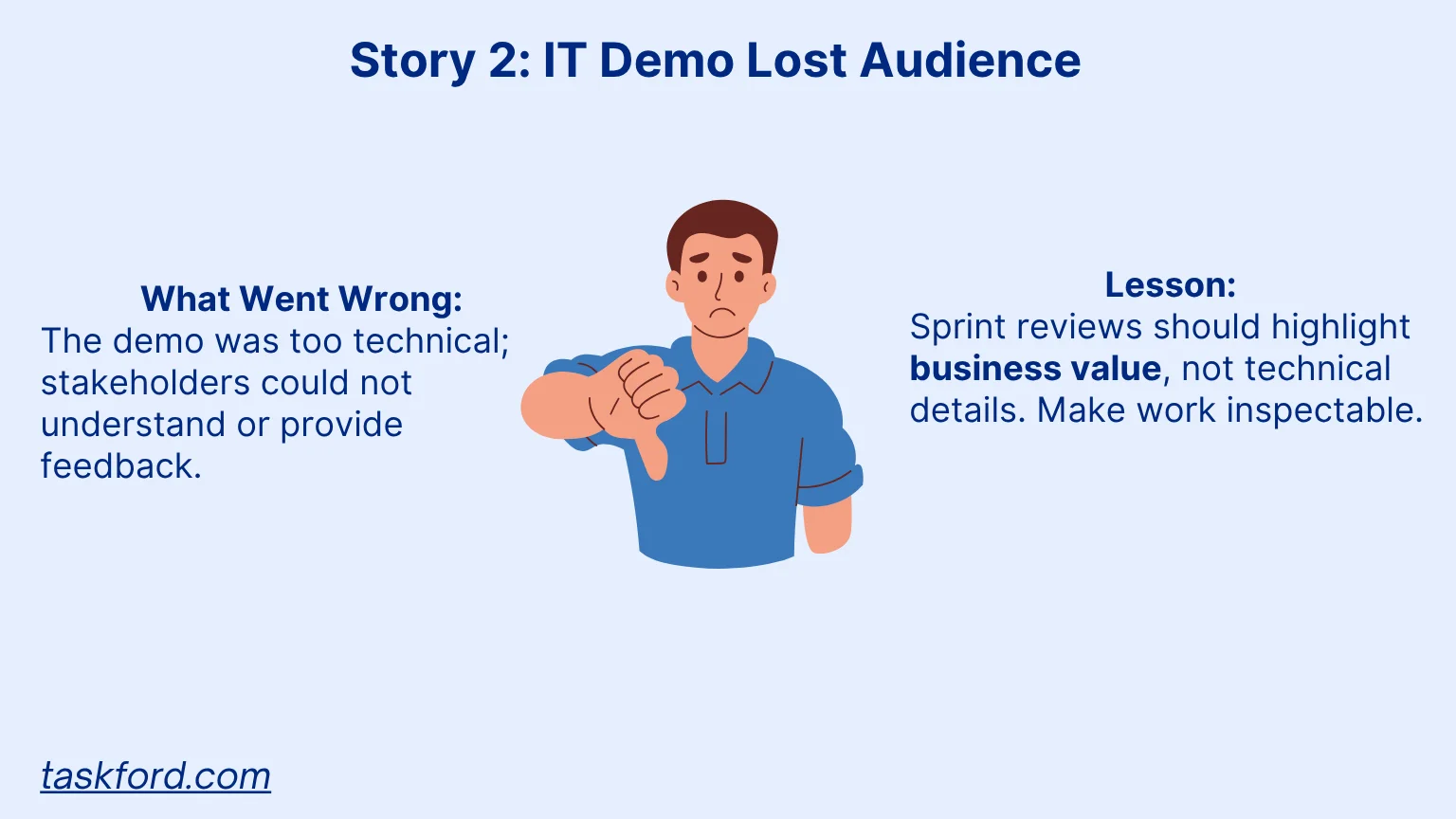
An IT team had just finished building a new API. Excited, they prepared a sprint review filled with code walkthroughs, sequence diagrams, and backend flowcharts.
The demo began, and almost immediately, non-technical stakeholders were lost. HR and finance leaders sat silently as acronyms and jargon washed over them. One finally whispered: “So… how does this help employees?”
The developers felt dismissed. They had worked hard, yet the value was invisible. The stakeholders, on the other hand, felt alienated. Instead of building shared understanding, the sprint review widened the divide between business and IT.
What Went Wrong
- The review focused on technical detail instead of business value.
- No clear link was made between progress and outcomes.
- Stakeholders left unable to give meaningful feedback.
Lesson for Teams
Sprint reviews should connect technical work to user impact. Stakeholders care about outcomes, not architecture.
What to Do Instead
- Demo using user stories: “As an employee, I can now request time off with one click.”
- Show prototypes or working screens rather than backend code.
- Translate progress into terms that tie to business priorities.
- Ask stakeholders: “Does this solve the problem you face?”
Story 3: The HR Review That Turned Into a Complaint Session
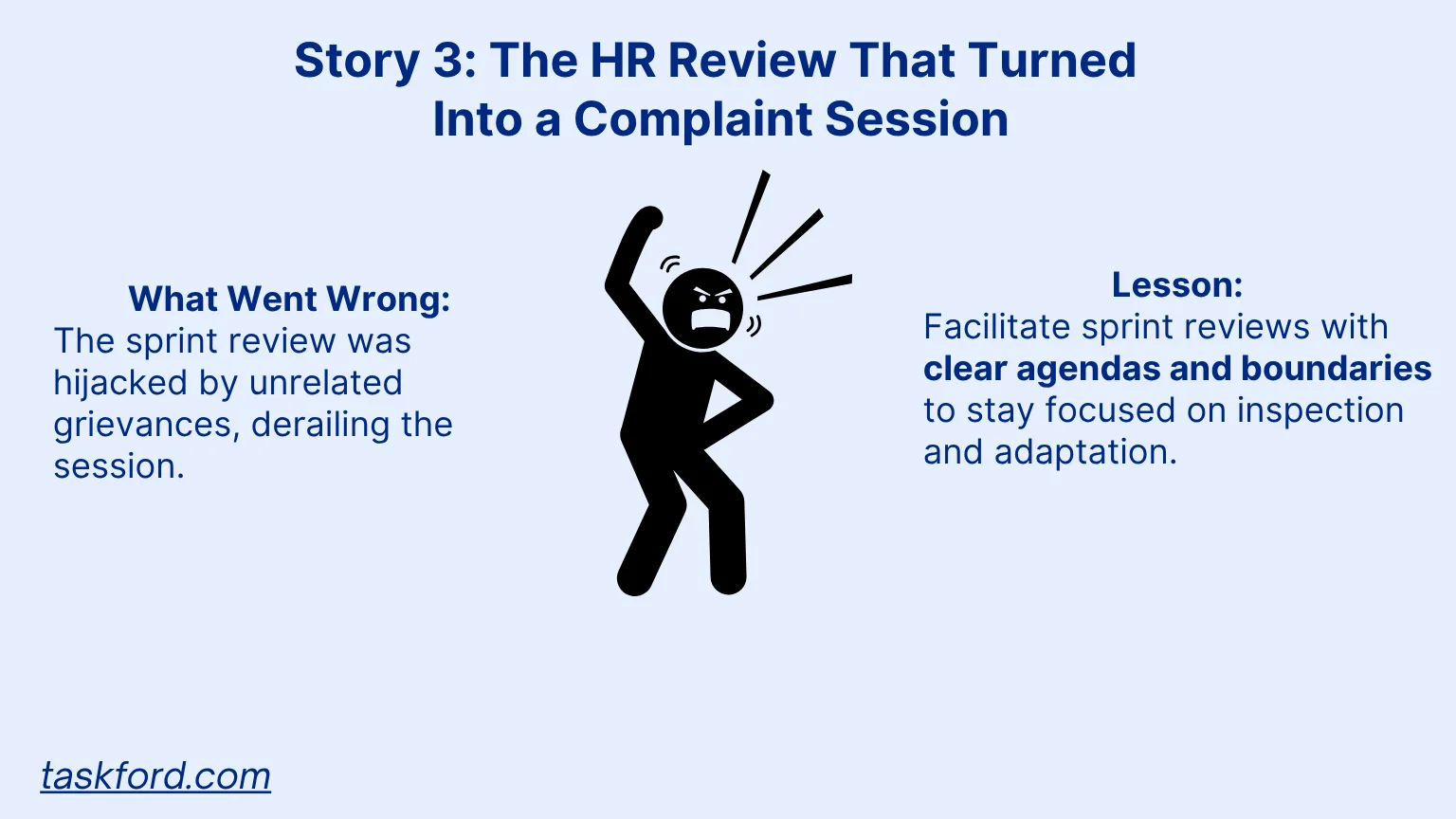
The HR team was piloting a new onboarding process. They planned to demo a digital portal and collect feedback from department managers.
The meeting, however, quickly derailed. Managers used the review to air frustrations about compensation, hiring freezes, and workloads. The demo was rushed. Feedback was scattered. When sprint planning rolled around, the HR team had little clarity on what to improve next.
The fallout was serious. Executives doubted whether Agile project management worked in HR. The HR team lost confidence. What was meant to be a constructive checkpoint turned into a grievance forum.
What Went Wrong
- No facilitator kept the agenda on track.
- Stakeholders hijacked the meeting with unrelated concerns.
- The sprint goal was overshadowed.
Lesson for Teams
Sprint reviews need strong facilitation. Without boundaries, they risk being consumed by off-topic issues.
What to Do Instead
- Send an agenda in advance with clear expectations.
- Use a “parking lot” board for unrelated issues.
- Time-box demos and feedback sessions.
- Revisit the sprint goal at the start and end of the review.
Story 4: The Product Team That Turned a Review Into a Status Meeting
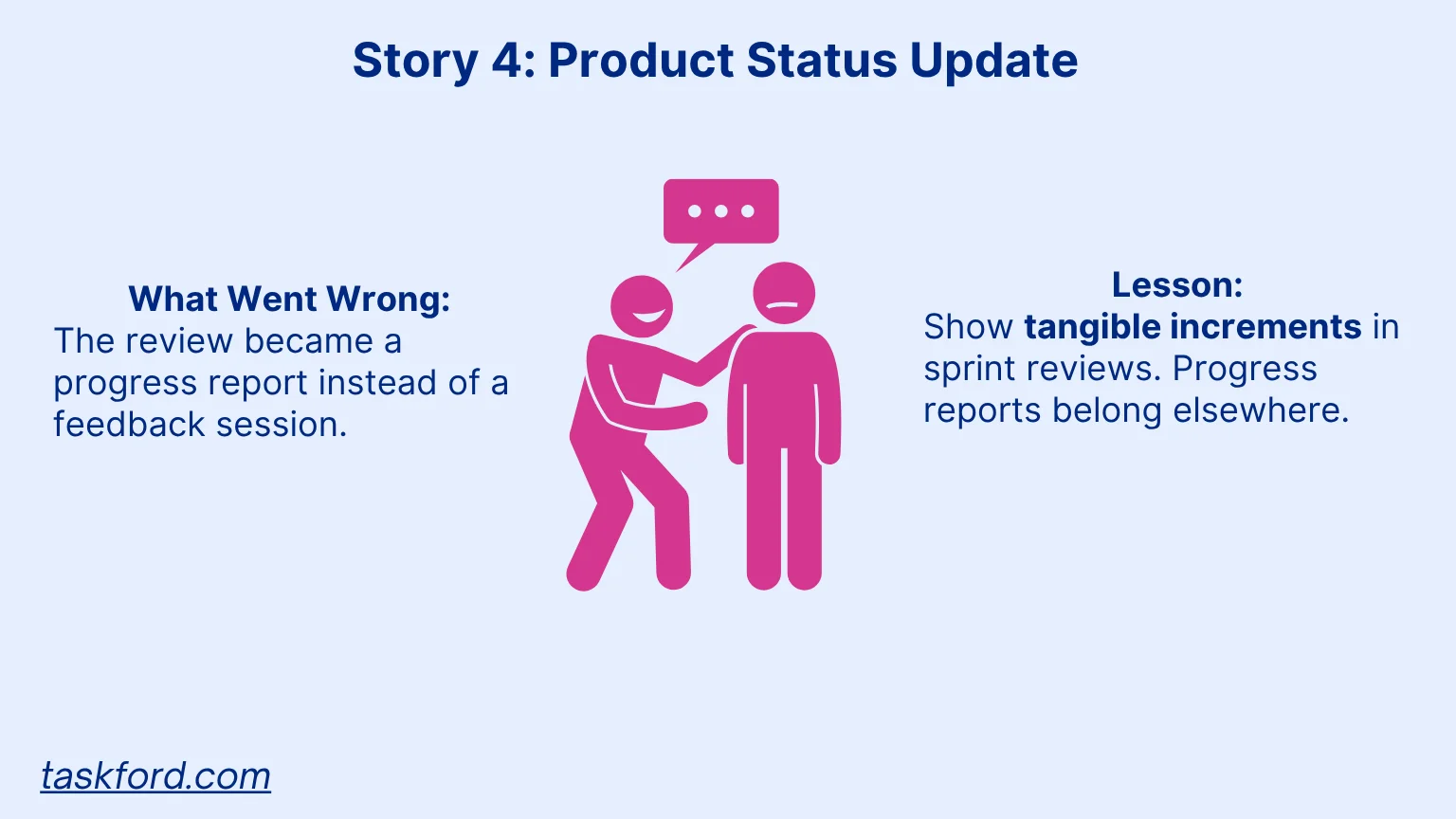
The product team was building a new customer portal. At their sprint review, instead of demoing the working feature, they presented a 30-slide deck.
Slide after slide contained updates like: “Integration is 60 percent complete” and “Testing is in progress.” Stakeholders nodded politely, but by the end of the meeting no feedback had been gathered.
When the feature launched later, users immediately struggled with login and navigation. These issues could have been caught early if stakeholders had been allowed to interact with the product during sprint reviews.
What Went Wrong
- The review became a progress report instead of a feedback session.
- No working increment was inspected.
- Stakeholders were disengaged.
Lesson for Teams
Sprint reviews should always involve working software or product increments. Stakeholders cannot provide feedback on percentages.
What to Do Instead
- Demo live features, even if incomplete.
- Let stakeholders try the product themselves.
- Keep status reporting in separate channels.
- Frame discussions around how features solve user problems.
Story 5: The Design Team That Ignored Feedback
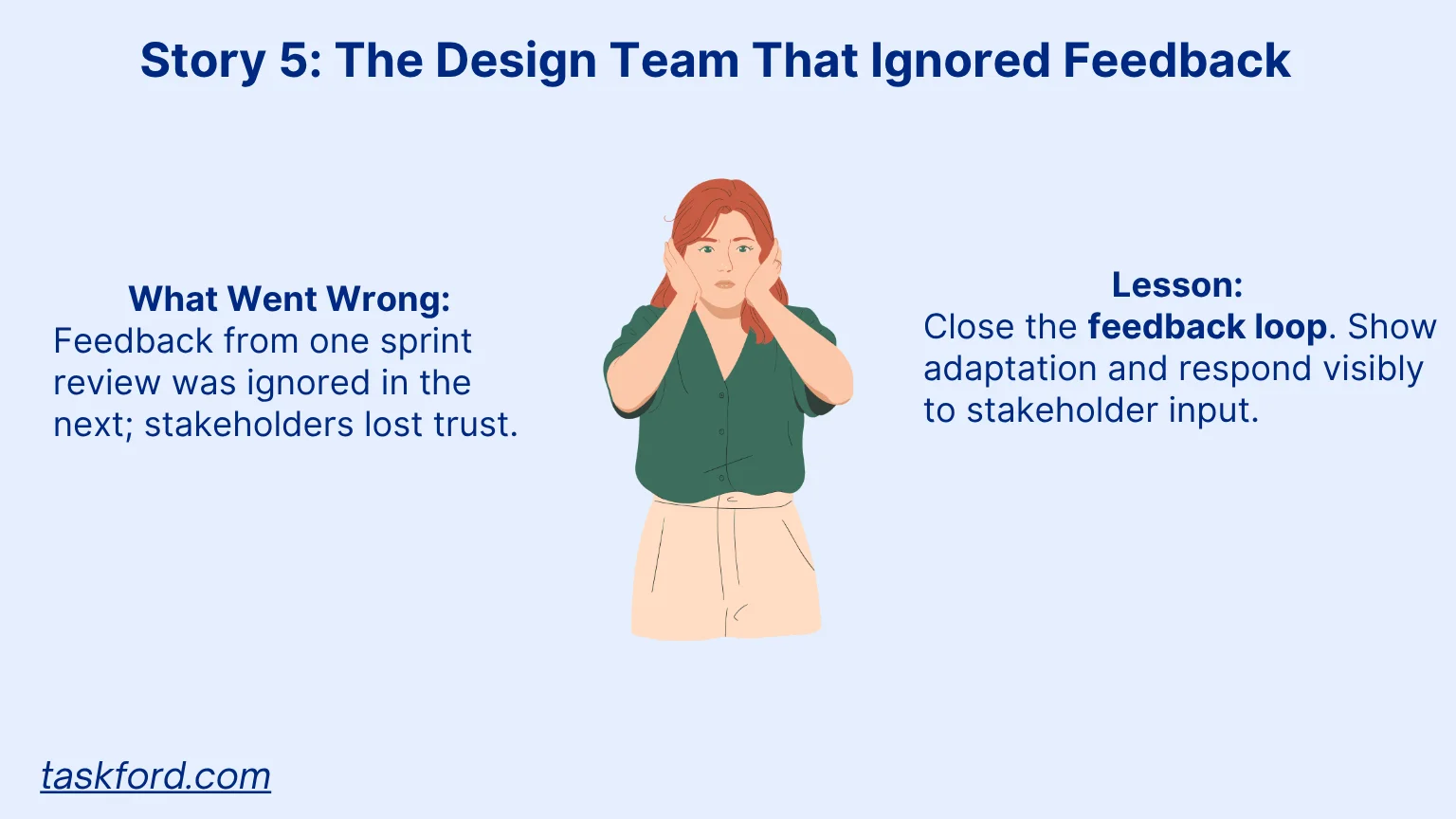
The design team showcased a sleek app interface during their sprint review. Stakeholders liked the look but raised critical concerns:
- The font size was too small.
- The color palette lacked accessibility compliance.
- Navigation required too many steps.
The team nodded, thanked stakeholders, and promised to consider the points. Yet at the next sprint review, the same design reappeared with only minor changes.
Stakeholders grew frustrated. “Are you listening to us?” one executive asked. Attendance dropped. Trust evaporated. By the third sprint, leadership questioned whether Agile was being practiced at all.
What Went Wrong
- Feedback was ignored or minimized.
- Stakeholders felt their input was meaningless.
- The cycle of inspectation and adaptation was broken.
Lesson for Teams
Feedback loops are the core of Agile. Ignoring input damages trust and undermines the entire sprint review.
What to Do Instead
- Highlight which pieces of feedback were implemented.
- Explain why some suggestions were not adopted.
- Show data to justify design choices.
- Build credibility by closing the loop every sprint.
Advanced Tips for Effective Sprint Reviews
Once the basics are in place, teams can elevate sprint reviews with more advanced practices:
- Engage Stakeholders Early: Send a short preview before the review. A one-minute video or a screenshot can prime stakeholders so feedback is more thoughtful.
- Use Structured Feedback Methods: Instead of open-ended questions, try “Start, Stop, Continue” or dot-voting on backlog priorities. These frameworks keep input actionable.
(Learn more: How to Prioritize Sprint Backlog: Who Is Accountable for Decisions?)
- Connect to Sprint Planning: Always end by discussing how the feedback will shape the next sprint. This reinforces the link between review and planning.
- Track Engagement Metrics: Monitor attendance, feedback quality, and backlog adaptation rates. If stakeholders stop attending or feedback dries up, it signals deeper issues.
Common Patterns Behind Sprint Review Failures
Across all five stories, the same patterns appeared:
- Misunderstood Purpose: Teams treated reviews as premieres, status updates, or complaint sessions.
- Weak Stakeholder Engagement: Stakeholders were left out or unable to connect progress to outcomes.
- Poor Facilitation: Without structure, reviews went off track or lost focus.
- Broken Feedback Loops: Teams ignored feedback or failed to show adaptation.
How These Patterns Tie to Agile Methodology
- Transparency: Without honest demos, stakeholders cannot see real progress.
- Inspection: Without clear outcomes, there is nothing meaningful to inspect.
- Adaptation: Without integrating feedback, sprints lose their value.
Agile collapses if even one of these three pillars is missing. Sprint reviews exist to uphold them all.
Conclusion
Sprint reviews can be either highly effective or a complete disaster. Marketing wasted weeks on a failed reveal, IT lost stakeholders in technical jargon, HR’s review was hijacked by complaints, product relied on slides instead of working features, and design ignored feedback. The key lesson is to focus on completed work, stakeholder engagement, and actionable feedback.
Project management tools like TaskFord help teams run better sprint reviews by organizing tasks, tracking progress, and giving stakeholders clear visibility. With structured reviews and the right tools, Agile teams can capture feedback, act on it, and improve future sprints
Learn more
- Definition of Done (DoD) and Definition of Ready (DoR) in Scrum
- Scrum vs Sprint: Why the Debate Exists and What Teams Really Need to Understand
- Real-World Agile Project Management with Scrum - Lessons from the TaskFord Team
Making work simpler,
smarter, and more connected
Join our waitlist and be notified first.

Related Blog
Subscribe for Expert Tips
Unlock expert insights and stay ahead with TaskFord. Sign up now to receive valuable tips, strategies, and updates directly in your inbox.






